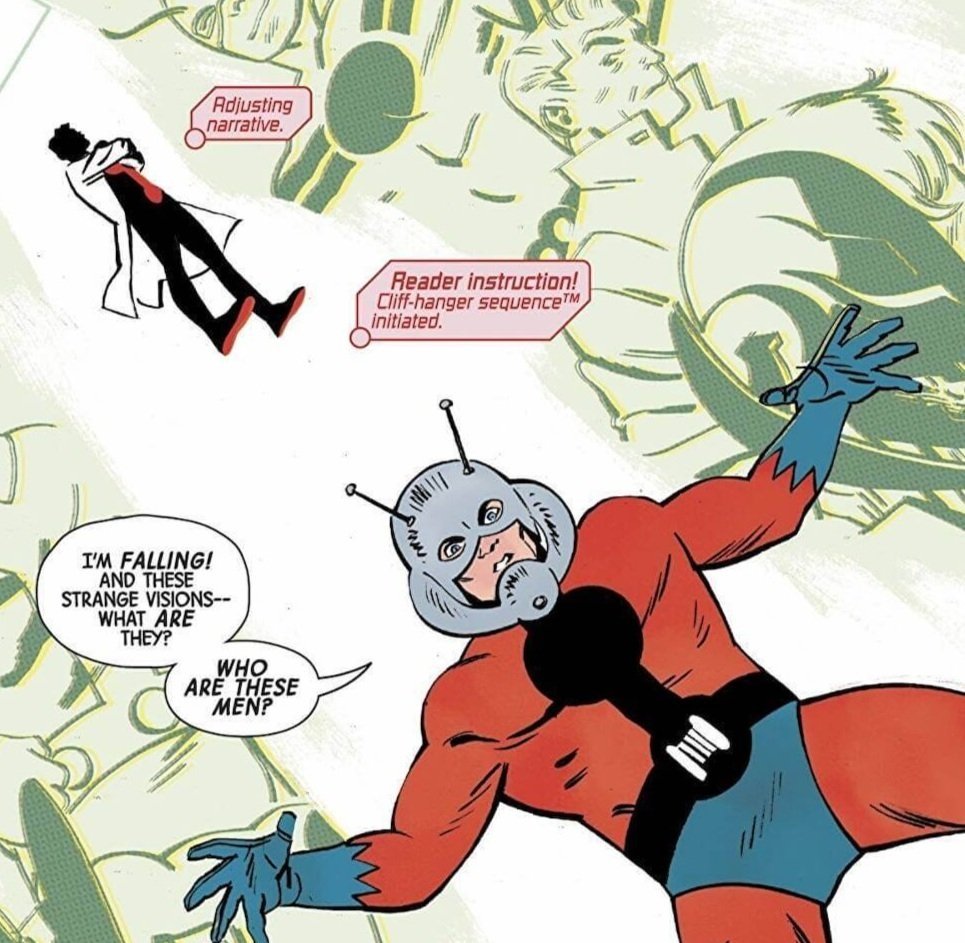Writer: Al Ewing / Penciller: Tom Reilly / Colour Artist: Jordie Bellaire / Letterer: VC's Cory Petit / Editors: Kat Gregorowicz and Darran Shan / Collects: Ant-Man (2022) #1-#4 and Tales To Astonish (1959) #37 & #43 / SC / Marvel Comics
5th January 2023. Review by Paul Dunne.
The Pitch: Celebrate the astonishing legacy of the Ant-Man with every hero who ever donned the helmet! Reacquaint yourself with Hank Pym, the original Ant-Man, during his early days as a costumed hero! Join the irredeemable Eric O'Grady on an untold adventure set during the events of SECRET INVASION! And in the present day, reconnect with Scott Lang as he tries to stop the villainous Black Ant from freeing the killer android Ultron from captivity! But in the far future, who is the new hero calling himself Ant-Man? And what can he do against an Ultron who has become a god?! Plus: Classic tales featuring Hank at the mercy of the pernicious Protector - and tackling the terrible Time-Master!
Marvel has always been full of weird science. From its very beginnings, predating the radioactive accidents that gave birth to Spider-Man and Daredevil, the sci-fi underpinnings that were present in many other forms of fiction (and in the less 'reputable' comics) were part of Marvel's stock-in-trade. Shrinking was a favourite in other fiction, or at least felt like it was. Richard Matheson had already written the definitive work on this subject and after the high melodrama of The Incredible Shrinking Man, a dose of fun was needed. Enter Ant-Man. Arguably a low-key fan-favourite, Ant-Man's antics (I'm sorry), came to prominence with recent series and of course with his key roles in the MCU. But there are still some of us (alright, me) who remain unaware of the many iterations of the one-inch wonder. Who's going to help us understand the ant? Well, Al Ewing and Tom Reilly have stepped up with this four-issue mini, packaged here with some relevant cuts from the Tales To Astonish '50s run.
Giving you the complete, digest view of a character that's been slipping between the cracks of your teenage bedroom since the fifties was never going to be an easy task, but Ewing and Reilly certainly make it look a breeze. Opting for a meta-Marvel storytelling style that makes the reader aware they're reading a comic rather than choosing immersion as its delivery method. Whilst not quite the Byrne She-Hulk style, it's certainly interesting and begs the question of if we like our stories better if we're in them or bystanders. The jury is still out for me on that one, but if it's done well, it doesn't matter. We'll get inside it anyway. The book is one of affectionate, note-perfect mimicry. Ewing recreates the bullpen-bustin' style of Stan The Man whilst Reilly revisits the simpler lines of the fifties. By the second issue, we're on to the more sophisticated, but nonetheless hyperbolic style of the early naughties, the more jagged lines of someone like Phil Hester, Scott McDaniel, or Shaun Martinborough.
Within the story itself, Ewing has a lot of fun. There's a certain, knowing irony to the fact that Eric O'Grady spends an issue trying to dig up Scott Lang's grave. Most comics creators working in the big two are gravediggers, resurrectors, and necromancers... Bringing the characters back to life when they slip into obscurity or their books become moribund. This is not a bad thing. I'm merely pointing out the excellent metaphor Ewing employs here. Plus, he also acknowledges that Namor was clearly THE choice of cuck for the bored Marvel superhero wife. Even Janet Van Dyne threatens Hank Pym with a little frolic in the sea if he doesn't pay her more attention. The book perfectly captures the ubiquity of super-types in Marvel's New York - one wonders if this is a comment on the modern omnipresence of capes and tights in our culture and there's an almost purposeful whimsy to the first couple of issues. It reminds us that this stuff can be a lot of fun, even when it's self-aware and 'meta'.
Ultimately, this Ant-Man seems to be about age and time. Pym's foes in the first issue are for the most part older, bitter men. Hank's punishment for defeating them once is to be 'aged up'. And someone is stalking him from across time, almost as if this is one of Kang's plots. We're batted through different storytelling styles and periods, as well as being given a glimpse at what the all-digital, self-aware world of Marvel might look like in the future. Ewing clearly has a deep love, respect, and knowledge of the old-school Marvels and deploys it here to great effect, giving you a brilliant comfort read. Reilly handles the changing pace and times of each issue with love and affection, before getting back to his own, gorgeous look by the climax. There's a nostalgia to the art, whilst simultaneously looking fresh and new, using the graphic design look favoured by many artists. Not to imply he doesn't stand alone. Just take a look at his work on last year’s Thing mini-series, The Next Best Thing. Bellaire faithfully restores that old paper hue at the beginning of the store, changing the palette as needed throughout the four issues to bring back those lost looks. Petit juggles a ton of different lettering types here, keeping you centered in the time period. The best Ant-Men yet, a tale to astonish!
Buy the original four-issue mini-series here or get the trade at your local comic shop.





